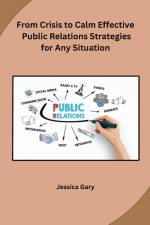von Caroline
34,00 €
Chronic diseases, also known as non-communicable diseases, are long-term conditions that generally progress slowly and persist over an extended period. These diseases can significantly impact the quality of life and are responsible for a substantial burden on healthcare systems worldwide. In this subchapter, we will delve into the concept of chronic diseases and explore the critical role that nutrition plays in managing and preventing these conditions.Chronic diseases encompass a broad range of health issues, including cardiovascular diseases, diabetes, cancer, and respiratory disorders, among others. These conditions are often influenced by various factors, such as genetics, lifestyle choices, and environmental exposures. However, one factor that stands out as a pivotal determinant of chronic diseases is nutrition.The impact of nutrition on chronic diseases cannot be overstated. Our dietary choices directly affect our overall health and well-being. Consuming a balanced diet, rich in essential nutrients, can help prevent and manage chronic diseases. On the other hand, poor dietary habits, characterized by excessive intake of processed foods, added sugars, unhealthy fats, and insufficient intake of fruits, vegetables, and whole grains, can contribute to the development and progression of chronic diseases.Understanding the relationship between nutrition and chronic diseases involves recognizing the influence of specific nutrients on our body's functioning. For instance, high sodium intake has been linked to increased blood pressure, a significant risk factor for cardiovascular diseases. Similarly, excessive consumption of saturated and trans fats can raise cholesterol levels, leading to heart disease. In contrast, a diet rich in fruits, vegetables, whole grains, and lean proteins can provide essential vitamins, minerals, antioxidants, and fiber, which are crucial for maintaining overall health and preventing chronic diseases.Moreover, nutrition affects chronic diseases beyond the direct impact on our body's physiological processes. Unhealthy eating habits often lead to obesity, which is a significant risk factor for numerous chronic conditions, including type 2 diabetes, certain cancers, and musculoskeletal disorders. By adopting a nutritious diet and maintaining a healthy weight, we can reduce the risk of developing these diseases, enhancing our overall well-being.






























